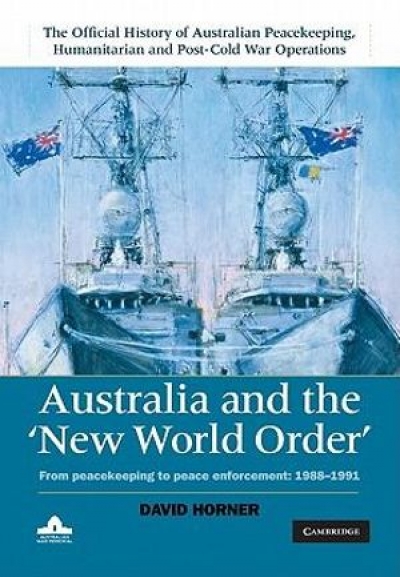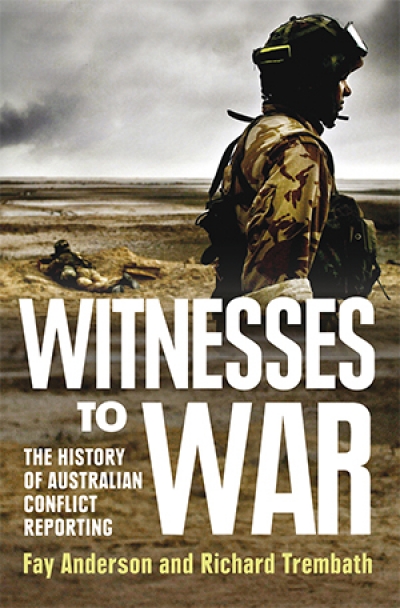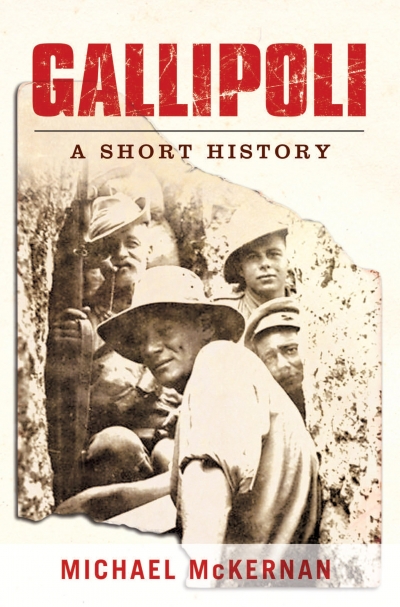History
1835: The Founding of Melbourne and the Conquest of Australia by James Boyce
The title of this book might, to an innocent observer, suggest a triumphalist history, an impression that could be reinforced by the preface, which argues that the setting up of a squatters’ camp on the banks of the Yarra in 1835 ‘had a significance far beyond the baptism of a great city’, and concludes with the ...
... (read more)Between the Leaves: Stories of Australian Women, Writing and Gardens by Katie Holmes
For historian Katie Holmes, researching and writing Between the Leaves was a journey of discovery and interpretation. In her examination of the records left by nine women – through their words and the signatures they left on the land – the author discovered some of the meanings that writing and gardening held for them. Holmes was also drawn to ways an individual’s story can illuminate a larger picture. Sites of women’s stories are also places where the nation’s stories can be found: ‘Within this book, women’s home and garden belong in history, rather than as a mere adjunct to it.’
... (read more)Italo Calvino once wrote that ‘cities are like dreams: their rules seem absurd, their perspectives are often deceitful, and everything in them conceals something else’, hence ‘we should take delight not in a city’s wonders, whether these number seven or seventy, but in the answers a city can ...
... (read more)Australia and the ‘New World Order’: From Peacekeeping to Peace Enforcement: 1988–1991 by David Horner
When the United States recently announced its commitment to enforce a ‘no-fly zone’ in Libya, the State Department spokesman was asked whether the United States was now at war. He could only manage a floundering non-answer. The unfortunate spokesman’s difficulty with this apparently simple question is a reminder of the vast changes in the nature of military conflict in recent decades. Major conflicts are seldom a matter of one state formally declaring war on another, with a largely agreed set of rules on the conduct of operations (sometimes flouted in horrific ways) and with some generally accepted markers of victory and defeat.
... (read more)This fascinating, complex book relies for its success on the simplest of ideas and methodologies. Its publication was the necessary and inevitable follow-on from the hugely successful BBC Radio 4 series, when, over twenty weeks, British Museum (BM) director Neil MacGregor presented short, daily radio commentaries ...
... (read more)Witnesses to War: The History of Australian Conflict Reporting by Fay Anderson and Richard Trembath
Witnesses to War, an ambitious book, is part of a larger project by the C.E.W. Bean Foundation to commemorate the work of Australian war correspondents. Fay Anderson and Richard Trembath, setting out to document the performance of Australian war correspondents, have tackled complex material. They deal with an enormous cast of characters and various interwoven themes, including the struggle against military censorship, how journalists have observed their duty to neutral coverage (or not), and the changing technology of reporting war – from sending stories by carrier pigeon or steamship in World War I to today’s live telecasts by journalists direct from battlefields in Iraq and Afghanistan. The book fills an important gap. Until now, Phillip Knightley’s more general work, The First Casualty: The War Correspondent as Hero and Myth-Maker (1975, 2004), has served as the final authority in this field. Knightley is a patron of the Foundation and an important influence.
... (read more)The Business of Nature: John Gould and Australia by Roslyn Russell
When the English zoologist John Gould died in London in February 1881, he was renowned for his scientific and descriptive studies, principally of birds – those found in his native Britain, the Himalayas, Europe, Australia, North America, and New Guinea – but also of Australian mammals. In the course of his self-made career, Gould produced forty-one large volumes, handsomely illustrated with 3000 plates. These were the work of several artistic collaborators, including, importantly, his wife, Elizabeth, and – early and briefly – Edward Lear, famous later in his own right for his limericks and as a masterly writer of nonsense verse and prose. In addition to his great published works of natural history, Gould was the author of many learned papers and the recipient of high honours from scientific societies. As a leader in his field, he interacted as an equal with aristocratic men of science and affairs; the members of the governing class of his day.
... (read more)Savage or Civilised? Manners in Colonial Australia by Penny Russell
Lacking a titled aristocracy and the leisured class that went with it, Australian colonial society encouraged an egalitarianism of manners. This, however, did not reflect the absence of social stratification: rather, as it has been argued, it was a means of being reconciled to it in a new setting ...
... (read more)Gallipoli: A Short History by Michael McKernan & Pozières: The Anzac Story by Scott Bennett
Michael McKernan states in his introduction to his short book on Gallipoli that he is dissatisfied with much writing on military history. He writes: ‘Military history is often presented as a thing of maps and statistics, a brutal narrative based on the deployments and motives of commanders with a score sheet of those who performed well and those who failed. In this book I have tried to go beyond that ... to show that somewhere for each life lost, there was long mourning and deep grief.'
... (read more)Australian Documentary: History, Practices, Genres by Trish FitzSimons, Pat Laughren, and Dugald Williamson
The concept of ‘documentary’ is a slippery customer. It may start with John Grierson’s ‘creative treatment of actuality’, but, like holding water in your hand, it bleeds across media from film into television and digital media, and across modes in one direction into news reporting and in the other into docudrama ...
... (read more)





